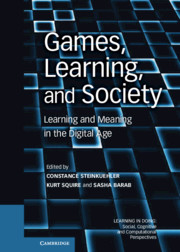Foreword
Published online by Cambridge University Press: 05 August 2012
Summary
People of all ages spend massive amounts of time watching television. In his book Cognitive Surplus, Clay Shirky argues that we could change the world if we could get people to devote many of those hours to important causes. And, indeed, more and more people today are turning off the television and using digital media to produce and not just consume, to participate and not just spectate, and to innovate and not just replicate. Video games are one important medium that has siphoned cognitive energy from television. However, for nongamers, video games are often not what they think they are based on what mainstream media often makes them out to be.
Games are not like books, movies, or television. Books, movies, and television are all about their content. In these media, content is king. Games have content, but they are not about their content. They are about doing, making decisions, solving problems, and interacting. Content is there in a game to facilitate and serve acting, deciding, problem solving, and interaction. In good games, content (including story or plot) needs to be a loyal vassal to game mechanics, that is, all that players must do and decide in order to succeed. War and Peace is about war and peace; Grand Theft Auto is not about crime – it is about players coming up with good strategies for success in a virtual world with multiple constraints, some stemming from the story and many from the design of the virtual world and the game play in it.
- Type
- Chapter
- Information
- Games, Learning, and SocietyLearning and Meaning in the Digital Age, pp. xvii - xxPublisher: Cambridge University PressPrint publication year: 2012
- 11
- Cited by



